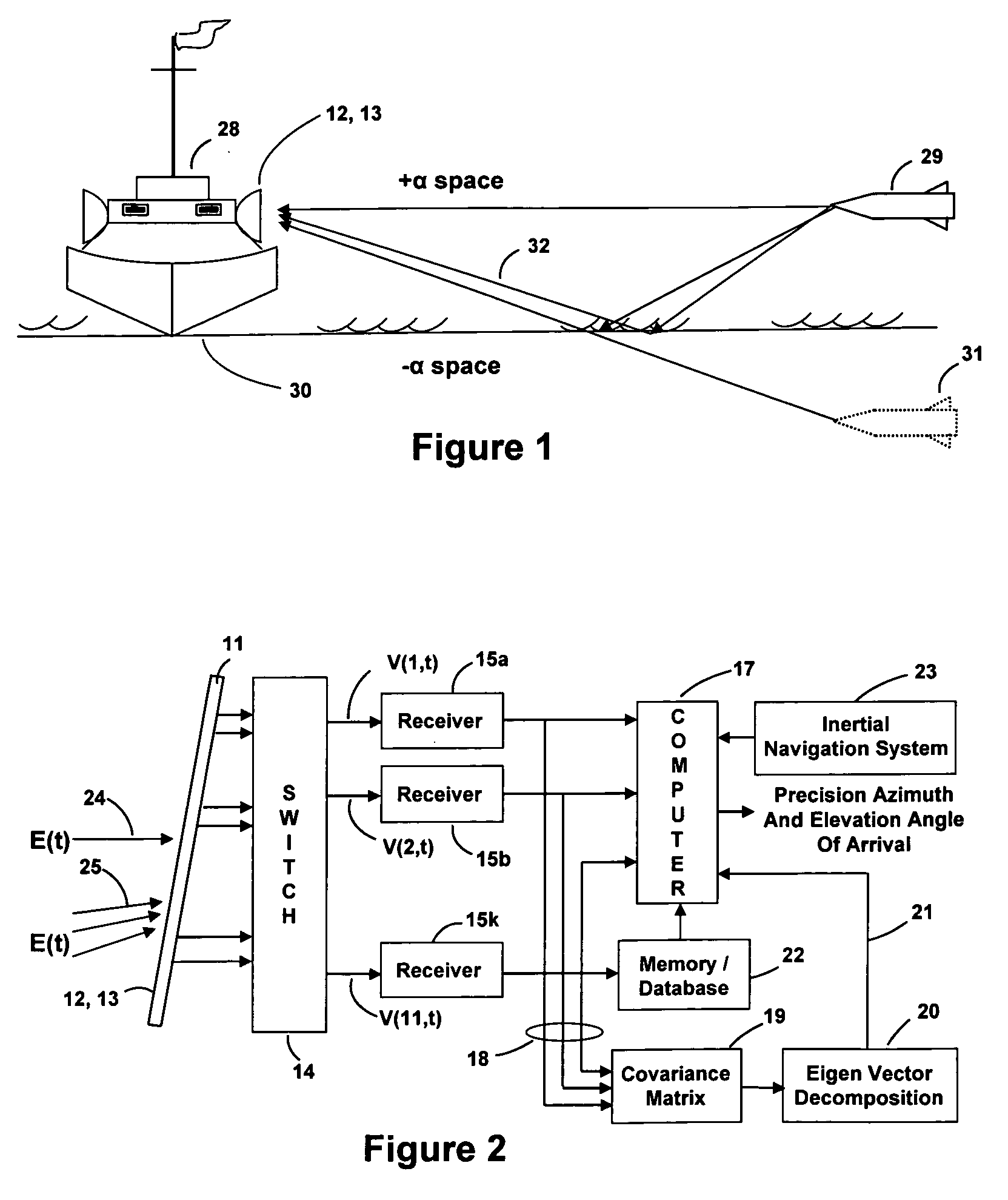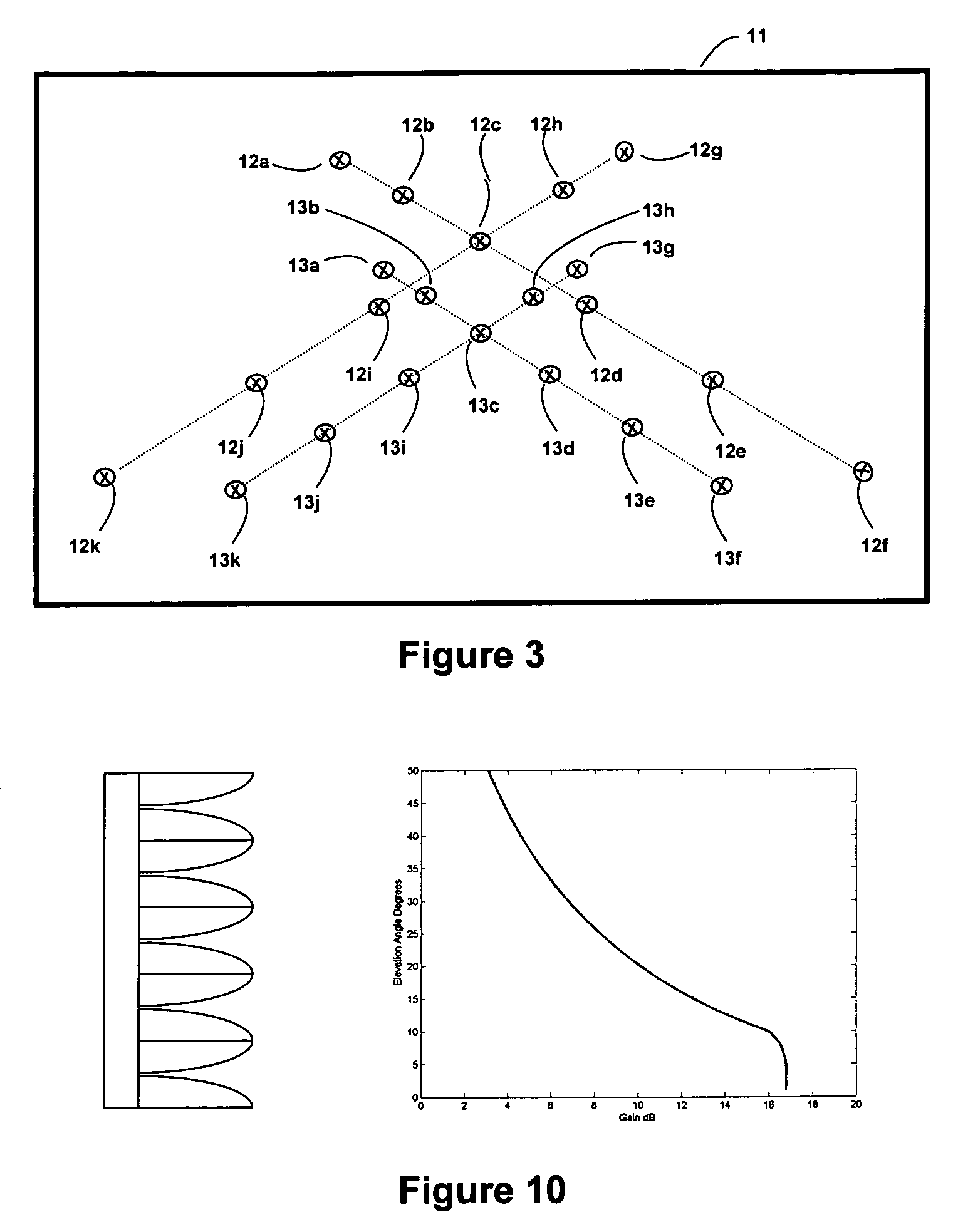Multipath resolving correlation interferometer direction finding
a multi-path resolving and direction finding technology, applied in direction finders, multi-channel direction-finding systems using radio waves, instruments, etc., can solve the problems of large amplitude correlation side lobes, real potential for large errors, and degrade the reliability of the estimate of azimuth and elevation of the directly incident radar signal
- Summary
- Abstract
- Description
- Claims
- Application Information
AI Technical Summary
Benefits of technology
Problems solved by technology
Method used
Image
Examples
Embodiment Construction
[0035]In the following detailed description and the drawings there are numerous terms used that are defined below:[0036]Apol (α,β) are the calibration vectors as a function of α (the elevation angle) and β (the azimuth angle) where:[0037]Apol=Av(vertical) or Ah (horizontal) calibration array manifold data base.[0038]+α=the space above the surface of the water.[0039]−α=the space below the surface of the water.[0040]CIDF=Correlation Interferometer Direction Finding.[0041]MR-CIDF=Multipath Resolving Correlation Interferometer Direction Finding[0042]DF=direction finding.[0043]DOA=direction of arrival, and consists of both the azimuth angle β and elevation angle α of a received signal.[0044]E=electromagnetic radio waves incident on the array of antennas.[0045]Na=number of antennas in each beam forming / direction finding array, eleven herein.[0046](i, q)=in-phase and quadrature-phase of a complex quantity.[0047]Rxx=measured covariance matrix.[0048]λ=eigenvalues of the measured covariance m...
PUM
 Login to View More
Login to View More Abstract
Description
Claims
Application Information
 Login to View More
Login to View More - R&D
- Intellectual Property
- Life Sciences
- Materials
- Tech Scout
- Unparalleled Data Quality
- Higher Quality Content
- 60% Fewer Hallucinations
Browse by: Latest US Patents, China's latest patents, Technical Efficacy Thesaurus, Application Domain, Technology Topic, Popular Technical Reports.
© 2025 PatSnap. All rights reserved.Legal|Privacy policy|Modern Slavery Act Transparency Statement|Sitemap|About US| Contact US: help@patsnap.com



